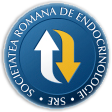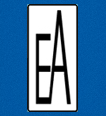
- Login
- Register
- Home/Current Issue
- About the journal
- Editorial board
- Online submission
- Instructions for authors
- Subscriptions
- Foundation Acta Endocrinologica
- Archive
- Contact
 Romanian Academy
Romanian Academy
 The Publishing House of the Romanian Academy
The Publishing House of the Romanian Academy

ACTA ENDOCRINOLOGICA (BUC)
The International Journal of Romanian Society of Endocrinology / Registered in 1938in Web of Science Master Journal List
Acta Endocrinologica(Bucharest) is live in PubMed Central
Journal Impact Factor - click here.

-
Case Series
Arslanoglu I, Eroz R, Yavuzyilmaz F, Dogan M, Bolu S, Karaca S
Variations in Monogenic Diabetes and Diabetes Susceptibility Genes in Pediatric Cases: Single Center ExperienceActa Endo (Buc) 2023 19(4): 512-522 doi: 10.4183/aeb.2023.512
AbstractContext. Diabetes is a chronic disorder with a complex pathogenetic background including monogenic, polygenic, and environmental causes. Objective. The aim of the present paper is to share the information related to genetic and clinical data of large pediatric diabetes cohort. Design. The present study retrospectively analyzes genetic and clinical findings of subjects diagnosed with diabetes under the age of 18 year and are in follow-up in a pediatric diabetes referral center. Subjects and Methods. Out of 1205 children with diabetes (902 treated with insulin) 246 underwent genetic tests on the basis of clinical selection criteria since 2007. Results. One hundred and ten variants related to diabetes were found in 89 of them. Age at presentation was 9.5±4.02 years (F/M 44/45). In total 49 pathogenic and likely pathogenic, 11 “hot and warm” of unknown significance variants were found in fourteen MODY and fifteen non- MODY genes according to criteria developed by American College of Medical Genetics. Thirty novel mutations were found. GCK (26.6%) and ABCC8 (10%) were two most frequently affected genes. Antibody testing revealed negative results in 80% of cases. Conclusions. Genetic interpretation in selected cases is important to understand the nature of the disease better. Improvement in testing opportunity and awareness might increase the prevalence of genetically explained diabetes cases. The distribution of subtypes differs between countries and even regions of the same country. -
Notes & Comments
Lozanov B, Gorcheva D, Lozanov LB, Koleva V, Refetoff S
Insufficiency of Levothyroxine Therapy in Autoimmune Hypothyroidism: Effect of Glucocorticoid AdministrationActa Endo (Buc) 2017 13(4): 515-518 doi: 10.4183/aeb.2017.515
AbstractObjective. The non-effectiveness of levothyroxine administration in hypothyroidism depends on many factors and mechanisms influencing its absorption in small intestins or bounding of circulating hormone with different active molecules. Methods. Thyroid hormones, TSH, rT3, TGl, TPOAb, TG-Ab, were measured using commercially available assays. For anti-T4ab, radioiodine-labeled T4 was added to the patient’s serum and the IgG fraction subsequently precipitated by addition of 15% polyethylene glycol. Background was determined by testing 100 control sera from individuals without autoimmune thyroid disease. Results. A 42-year old woman (71.5 kg) with Hashimoto thyroiditis receiving levothyroxine (L-T4) 150 μg and liothyronine (L-T3) 37.5 μg was admitted to the hospital with clinical data of hypothyroidism, TSH-23.8 mU/L, FT4- 6.18 pmol/L (n.range 9-19 pmol/L), TPO-Ab 696 IU/mL, TGAb 818 IU/mL, circulating T4- antibodies positive. She has a good adherence to medication, malabsorption or administration of other drugs were excluded. L-T4 absorption test revealed 44% increase of serum FT4 at 120 min after ingestion of 150 mcg L-T4 (2.1 mcg/kg). Methylprednisolone pulses of 500 mg i.v. administered in three consecutive days at equal doses of L-T4/L-T3 resulted in a rapid increase of FT4 to 14.5 pmol/L, fall of TSH to 0.18 mU/L and decrease of anti-T4 antibodies to referent range; TPO-Ab and TG-Ab also decreased significantly. Monotherapy by 150 mcg L-T4 was continued in the next three months. A recurrence of hypothyroidism with increase of circulating T4-Ab was observed 100 days later. New administrations of methylprednisolone two pulses of 500 mg revealed a similar normalization of thyroid hormones and anti-T4 antibodies. Conclusion. The data showed that T4-antibodies might be a cause of insufficient effects of levothyroxine therapy in autoimmune hypothyroidism. This could be overcome by glucocorticoid administration probably resulting in FT4 release from circulating immune complexes. -
Case Series
Unal MC, Gungor Semiz G, Ozdogan O, Altay C, Caliskan Yildirim E, Semiz HS, Comlekci A, Akinci B
Nivolumab Associated Endocrine Abnormalities: Challenging Cases from a Reference ClinicActa Endo (Buc) 2022 18(4): 516-522 doi: 10.4183/aeb.2022.516
AbstractBackground. Immune checkpoint inhibitors (ICIs) have revolutionized the treatment of advanced cancers. Antibodies directed against programmed cell death receptor 1 (PD-1) interrupt the ability of the cancerous cell to depress the immune system. Methods and results. We report three patients who developed different endocrine abnormalities after treatment with nivolumab, a monoclonal antibody directed against PD-1. First, we report a 76-year-old male presenting with generalized fat loss after treatment with nivolumab which predominantly affected his face and trunk. Second, we described the development of thyroiditis that presented with thyrotoxicosis and the expression of thyroid-stimulating hormone receptor antibodies (TRAb). Finally, we observed the emergence of adrenal insufficiency due to hypophysitis in another case. Conclusion. Although immune checkpoint inhibitors are an effective anticancer treatment modality, adverse effects are evident that can affect the endocrine system. These adverse events may relate to different endocrine systems that include the thyroid and pituitary glands. Also, acquired generalized lipodystrophy should be suspected in patients developing unusual fat loss after treatment with ICIs. -
Endocrine Care
Erol V, Makay O, Nart D, Ertan Y, Icoz G, Veral A, Akyildiz M, Yilmaz M, Yetkin E
Review of Thyroid Cytology and Histology Slides in a Tertiary Centre Leads to a Change in Planned Surgical Treatment for Patients with Thyroid NodulesActa Endo (Buc) 2011 7(4): 523-528 doi: 10.4183/aeb.2011.523
AbstractAim. Histology and cytology consultations of thyroid fine needle aspiration biopsy (FNAB) of thyroidectomy specimens can change management of the patient. We aimed to determine compliance rates of pathology results between urban centers and a tertiary institution and its impact on patient management.\r\nMethods. This retrospective study includes 101 patients, who were referred to our center, between January 2008 and December 2008. After admission, all FNAB or thyroidectomy specimens of patients managed elsewhere were consulted by the pathology department. Comparison of FNAB and histology reports of our institution and the medical centers elsewhere had been carried out.\r\nResults. A total of 76% concordance rate was found between the FNAB results of other centers and consultation results. The highest concordance was observed in the malignant cytology group (77%). The cytological or histological outcomes of 24 (23.7%) patients were interpreted differently. After second opinion, patient management\r\nchanged in 21 of the 101 patients.\r\nConclusion. Since FNAB results can change the type of surgical treatment and the management plan, the results especially reported as suspicious may need a second\r\nopinion. We suggest that cytology or histology results of thyroid patients referred to tertiary centers for further evaluation and treatment should always be reviewed. -
Case Report
Matei L, Teodorescu MI, Kozma A, Iordan Dumitru AD, Stoicescu SM, Carniciu S
Persistent Asymptomatic Severe Hypoglycaemia Due to Type 0A Glycogenosis - General and Oro-Dental AspectsActa Endo (Buc) 2019 15(4): 526-530 doi: 10.4183/aeb.2019.526
AbstractBackground. Type 0 glycogenosis is a genetic metabolic disorder characterized by the absence of glycogen synthesis of hepatic synthase and hence of liver glycogen stores in normal amounts. It is an extremely rare condition. Case study. This case is a 5-year and 11-monthold female child with asymptomatic severe hypoglycemia in the last two years. During the admission and afterwards, an extensive panel of paraclinical and imaging investigations was carried out to diagnose and document the case, which led to the specific genetic test. The result was positive for 2 heterozygous mutations in the GYS2 gene (hepatic glycogen synthase), the p.547C> T mutation was pathogenic (class 1) and c.465del, frameshift likely pathogenic (class 2). In order to integrate the clinical picture of patients with this condition and to establish potential correlations regarding the specific aspects with the general development and the phenotype, the oro-dental status was investigated. Conclusion. The investigations showed a positive correlation with literature data in several respects: low stature, hypoglycemia with hyperketonemia but normal plasma lactate, postprandial and contradictory hyperglycemia, delayed bone development, etc. Oro-buco-maxillary aspects showed a slight delay in the dental eruption. Dietary therapy and stricter dental care and additional prophylaxis are required. -
Case Series
Ozden S, Saylam B, Daglar G, Yuksek YN, Tez M
Are Thyroid Nodules an Obstacle to Minimal Invasive Parathyroid Surgery? A Single-Center Study From an Endemic Goiter RegionActa Endo (Buc) 2019 15(4): 531-536 doi: 10.4183/aeb.2019.531
AbstractContext. Minimally invasive parathyroidectomy (MIP) procedure has become a widely accepted alternative to the standard four-gland exploration nowadays. Objective. The aim of this study was to evaluate patients with primary hyperparathyroidism (PHPT), who had been treated with thyroidectomy and bilateral neck exploration (BNE), rather than MIP alone, due to coexisting thyroid nodules and to determine the benefits of simultaneous thyroidectomy and the possible negative outcomes of not performing this additional procedure. Design. There were 185 patients who were operated for PHPT at our clinic from January 2014 to November 2016. Subjects and Methods. 50 patients meet inclusion criteria: have thyroidectomy at the same time of parathyroid surgery, have concordant findings of parathyroid adenoma localization at preoperative MIBI-SPECT and the cervical US and have not had malignancy on fine needle aspiration biopsy (FNAB). Results. The mean age of the patients was 55.3±10.4, and female to male ratio was 7:1. All patients had parathyroidectomy with BNE and thyroidectomy: 11 (22%) patients had micropapillary thyroid cancer (mPTC), 2 (4%) had papillary thyroid cancer (PTC). Conclusion. The results were inconclusive in clearly demonstrating which patients presenting with coexisted thyroid nodules should undergo thyroidectomy, rather than MIP, and which should be monitored for thyroid nodules after MIP. However, we consider that in cases who are not clearly indicated for thyroidectomy, MIP followed by monitoring of thyroid nodules can be the treatment approach. -
Case Report
Genc S, Evren B, Bozbay A, Aydin ES, Genc O, Sahin I
Could Covid-19 Trigger Type 1 Diabetes? Presentation of Covid-19 Case Presented with Diabetic KetoacidosisActa Endo (Buc) 2021 17(4): 532-536 doi: 10.4183/aeb.2021.532
AbstractCOVID-19 is a viral disease that is recognized now as a pandemic by the World Health Organization. It is known that some viral infections may trigger autoimmune diseases. It has been revealed that COVID-19 may also lead to the pathogenesis of some autoimmune diseases, including Type 1 DM (T1DM) and autoimmune thyroid diseases. Here, we aimed to present a young female patient with COVID-19, who we followed up in our clinic, who presented with diabetic ketoacidosis (DKA), and developed Hashimoto’s disease during the treatment process. In order to emphasize that COVID-19 may trigger the emergence of T1DM, that it may mask nonspecific DKA symptoms like nausea and vomiting, that it may cause delay in diagnosis of DKA, and also to emphasize the importance of evaluating other autoimmune diseases accompanying COVID-19, we found it appropriate to present this case. -
Notes & Comments
Hekimsoy Z, Eniseler EB, Erdem N, Ozdemir N
Catamenial Diabetic KetoacidosisActa Endo (Buc) 2022 18(4): 538-540 doi: 10.4183/aeb.2022.538
AbstractDiabetic ketoacidosis (DKA) is a common medical emergency situation. In rare cases, glycemic changes associated with the menstrual cycle may create a predisposing factor for DKA. In the absence of facilitating factors that may cause DKA, catamenial DKA should be considered. In the patients with catamenial DKA, increasing the insulin dose 1-2 days before menstruation may prevent the development of hyperglycemia or DKA associated with menstrual cycle. In this study, we present a 21-year-old female with type 1 diabetes mellitus (DM) that recurrently applied to our hospital due to DKA a few days prior to menstrual bleeding. -
Case Series
Bilici ME, Siklar Z, Unal E, Tacyildiz N, Aycan Z, Ozsu E, Uyanik R, Ceran A, Berberoglu M
The Use of Oral Bisphosphonates in Refractory Severe Hypercalcemia after Denosumab CessationActa Endo (Buc) 2024 20(4): 538-541 doi: 10.4183/aeb.2024.538
AbstractDenosumab,a monoclonal IgG2 antibody, is used as neoadjuvant therapy for giant cell bone tumors, particularly in inoperable or metastatic cases. It targets the receptor activator of nuclear factor kappa-β ligand (RANKL), which is overexpressed in tumor stromal cells. However, denosumab treatment can lead to side effects such as hypocalcemia during treatment and rarely but malignant hypercalcemia after discontinuation. The unpredictable onset time and persistent course of hypercalcemia attacks increase the duration of hospitalization and the risk of complications. Case. A 9-year-old girl with a giant cell bone tumor was treated with denosumab for diffuse tumor recurrence. Severe hypercalcemia occurred four months after completing therapy. Evaluation suggested "rebound-linked" hypercalcemia following denosumab discontinuation. IV bisphosphonate treatment normalized calcium levels initially, but hypercalcemia recurred, requiring repeated IV bisphosphonate administration. Oral alendronate was used weekly to prevent further attacks, resulting in stable calcium levels during follow-up. Results. Rebound hypercalcemia, as an unpredictable recurrent episode at any time, is a potential complication of denosumab cessation, and requires close monitoring post-treatment. Children may be at higher risk due to their rapid bone cycle. In long-term follow-up, IV and oral bisphosphonates can be used effectively in the management of especially life-threatening recurrent attacks. -
Endocrine Care
Atmaca M, Ozturk M, Ozbay MF, Ergenç E, Gönüllü E, Çokluk E
TSH Levels in Pregnant Women with Iodine Deficiency before Spontaneous AbortusActa Endo (Buc) 2014 10(4): 621-628 doi: 10.4183/aeb.2014.621
AbstractBackground. Iodine deficiency and/or thyroid autoimmunity are the most common causes of hypothyroidism development among pregnant women. In this study, we aimed to investigate the effect of iodine consumption and thyroid autoimmunity on TSH levels and abortus. The study sample consisted of 104 patients, 79 in abortus and 25 in control groups. TSH, free T4, free T3, anti-TPO, anti-Tg, spot urinary iodine concentrations, and thyroid volumes of the cases were measured by ultrasonography. The spot urine concentration was below 100 μg/L in 93% of the cases included in the study. The TSH levels of the abortus group cases were significantly higher than those of the controls (p=0.025). The percentage of subclinical hypothyroid cases were significantly higher among the cases evaluated due to abortus compared to the control group (p<0.001). Abortus and control groups did not differ statistically with respect to the presence of autoimmune thyroid diseases (p=0.424). Spot urine iodine concentrations of abortus cases with subclinical hypothyroid were significantly lower than those with TSH levels below the defined range (p=0.001). Spot urine iodine concentrations of the cases with subclinical abortus with negative thyroid autoantibodies were also significantly lower than those with TSH levels below the defined range (p=0.017). TSH levels above 1 μIU/mL for the first trimester and 2 μIU/mL for the second trimester may be indicators of iodine nutrition in pregnancy losses.